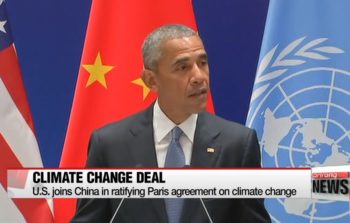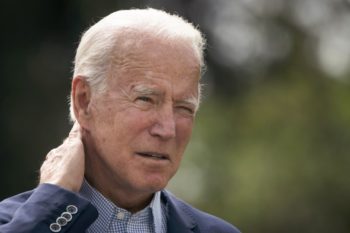
U.S. officials detailed the agreement reached by Messrs. Obama and Xi ahead of what is likely to be their final meeting before a new president enters the White House in January.
The new steps include formal adoption by both the U.S. and China of the international climate-change agreement reached in Paris in December 2015, as well as a road map for achieving emissions reductions in commercial aircraft and for phasing out hydrofluorocarbons, or HFCs, a potent group of gases that are linked to climate change but aren’t covered by the Paris agreement.
The moves cap three years of efforts by Messrs. Obama and Xi to advance climate-change initiatives, following their first meeting as presidents in 2013.
The White House has touted the climate cooperation as a vital form of leadership the two biggest economies have sought to demonstrate for the rest of the world, where developed and developing countries often are at odds. The administration has given a high priority to climate collaboration with Beijing at a time when the two countries have struggled to see eye-to-eye on other economic issues, such as trade, investment rules and exchange rates. The countries have also faced tensions over military affairs and cybersecurity.
Brian Deese, a senior White House adviser, said that the U.S. and China have come “full circle” on climate change with the Paris agreement announcement.
The durability of the U.S. commitments largely hinge on November’s presidential election. Democratic candidate Hillary Clinton and Republican candidate Donald Trump have taken opposite positions on climate change.
Mrs. Clinton has said she would continue Mr. Obama’s climate-change agenda. Mr. Trump has promised to roll back Mr. Obama’s climate-change measures, questioning the scientific findings behind them.
The formal adoption of the climate-change agreement by the U.S. and China is designed to encourage other nations to formally adopt the Paris pact, helping it enter into force as early as this year, Mr. Deese said, noting that, together, the two countries represent roughly 38% of the world’s emissions.
















